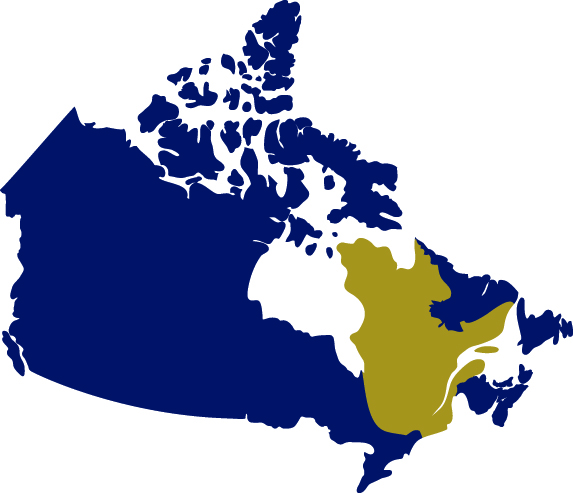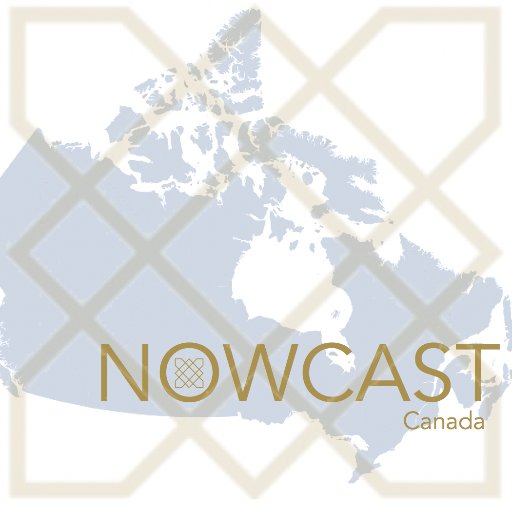Canadian Economic Forecast: Canada is Turning 150 with Reason to Celebrate
Canada turns 150 years old in a few short weeks, and it looks like the party that’s been going on for a while isn’t going to stop any time soon. Indeed, in the three quarters starting in Q3 2016, real GDP in Canada has experienced average quarterly growth of 3.5% annualized - a solid performance by any measure (Chart 1). To put this in perspective, growth in the US has been a more modest 2.2% over the same period. Mind you, some of the Canadian strength reflects a rebound following the negative economic impact of last summer’s devastating wildfires in Alberta. But recent growth has been more broad-based than we’ve seen in a while. And with @NowcastCanada tracking 2.0% annualized growth in Q2 2017, this above-trend print is helping to put the Canadian economy on track to hit 2.6% real growth in 2017 – the strongest advance since recovering from the Great Recession. Meanwhile, the U.S. economy is on track to advance by 2.2% this year – not bad but nowhere near the pace of its syrup-sipping cousin to the north.
The Canada Infrastructure Bank - A Subsidy by Another Name
There has been a lot of discussion about the returns private-sector investors are going to require to make investing with the Canada Infrastructure Bank (CIB) a viable option. At a minimum, pension funds must make around a 6% rate of return on their investments, and similar return thresholds apply to infrastructure specifically. However, they should reasonably expect to make much more than that. The reason is that, in addition to being compensated for growth in overall economic activity, investors must be compensated for the risk associated with investing in large, illiquid assets with uncertain returns such as infrastructure. Indeed, asset managers put the annual rate of return from investing in infrastructure in the range of roughly 10% to 15%. This includes returns from both revenues and capital appreciation.
Is the Price Right? A Simple Example of Infrastructure Valuation
To most readers, the topic of pricing infrastructure assets no doubt precedes to onset of a good night’s sleep. Concepts such as internal rate of return, amortization, economic forecasts, and risk premiums are enough to make even the most interested observer begin to nod off. However, in the context of the planned introduction of the Canada Infrastructure Bank (CIB), it is worth putting these concepts to use, as even a simple application of these ideas is important to evaluating the merits of the CIB.
Is Infrastructure a Public Good? No, Sort Of, and What Role for the Public and Private Sectors
The federal government seeks to create a new institution for funding infrastructure investment––the Canada Infrastructure Bank (CIB). In Canada, it is governments at all levels that tend to hold the primary role in the planning, building (i.e. as sponsor), managing and financing of infrastructure. Other than in the construction phase, the private sector is a relatively niche player in the lifecycle of infrastructure assets. The CIB aims to be a catalyst for including the private sector in the other aspects of the lifecycle. The untested presumption is that service levels, externalities and competition will remain constant (at least) while risk will be transferred from the public to the private sector. However, this has rarely been the case with public-private partnerships (PPPs)––the oft-cited private-sector solution to public-sector infrastructure folly. Indeed, with the private sector owning and managing infrastructure assets, the cost of capital is likely go up.
“Where Were They Going Without Ever Knowing the Way?” Assessing the Risks and Opportunities of the Canada Infrastructure Bank
In the 2016 Fall Economic Statement, the federal government outlined the broad strokes of its soon to be established CIB. A key recommendation of the Finance Minister’s Advisory Council on Economic Growth and Prosperity, the federal government expounded further on the CIB in Budget 2017 and again, more recently, in the Budget Implementation Act (BIA). The BIA has put even more meat on the bone, although information on this one-of-a-kind crown agency still makes for some pretty thin pickings and public consultations appear to be sparse.
Le facteur d’enrichissement dans les soins de santé – une perspective mondiale et canadienne
Les besoins monétaires futurs en santé sont définis comme étant la somme de variables démographiques, soit la croissance de la population et le vieillissement de la population, ainsi que l’inflation et la croissance du revenu. Un avantage de ces variables est notre capacité à les mesurer et, dans une certaine mesure, les prévoir longtemps à l’avance. ar contre, d’autres variables qui elles aussi affectent les coûts des soins de santé sont beaucoup plus difficiles à mesurer et même à définir. C’est pour cette raison qu’une publication de l’Organisation de coopération et de développement économiques (OCDE), entre autres études, définit toute variable expliquant la croissance des soins de santé ne dépendant pas de la démographie ou du revenu comme un résidu. eur importance n’est cependant pas marginale. En effet, des facteurs aussi importants tels que l’amélioration de la qualité des soins donnés dû aux avancées technologiques, l’élargissement de l’accès aux soins et des couvertures individuelles et le prix relatif des traitements médicaux ont tous comme effet l’accroissement des dépenses de santé, mais sont inclus dans le résidu.
\n
L’entente sur le Transfert canadien en matière de santé – Satisfaisante pour le Québec ?
C’est le 10 mars dernier que le gouvernement du Québec annonça à l’instar des autres provinces canadiennes la signature d’une entente avec le gouvernement fédéral sur le financement des soins de santé. En vertu de celle-ci, Québec recevra sa part du financement additionnel de 11 milliards de dollars promis sur 10 ans par Ottawa dans le dernier budget fédéral, soit environ 2,5 milliards de dollars, pour les soins à domicile et la santé mentale. Mais est-ce suffisant afin d’assurer la pérennité du système de santé québécois à long terme ?
CHT and the Federation: Past, Present, and Future
Over the past 30 years, health care spending in Canada has followed a pattern of peaks and troughs tied to overall economic activity and fluctuations in federal funding. Throughout this period, health spending varied significantly across provinces and territories. This has led to notable differences between actual expenditures and the notional health care costs derived from the macroeconomic fundamentals of population growth, aging, real income growth, and inflation.
Nowcasting: Economic Forecasting Meets Just-In-Time Delivery
Along with continued advances in computing power and the availability of a broader range of data than just that provided by official sources, nowcasting has become an increasingly popular area of analysis among economists. Also known as tracking or monitoring, nowcasting refers to forecasting an economic variable in the very near term by incorporating data of varying frequencies or timeliness, as well as data from official and unofficial sources.
Skills and Innovation: A Good Time for a Full Spending Review
Budget 2017 is expected in the next few weeks. It will be the second budget for the Liberal government. The stakes are high.Budget 2017 is expected in the next few weeks. It will be the second budget for the Liberal government. The stakes are high.







.jpg)





